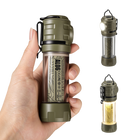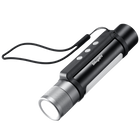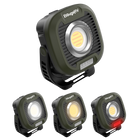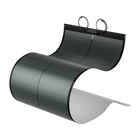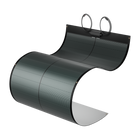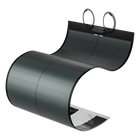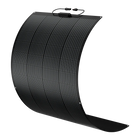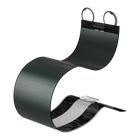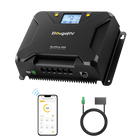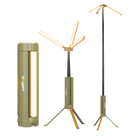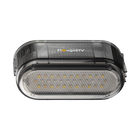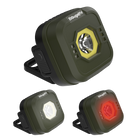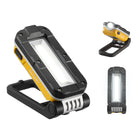Can You Charge a Portable Power Station with Solar Panels?

As outdoor adventures and camping trips grow more popular in the U.S. and Europe, many enthusiasts are seeking sustainable, portable, and reliable energy solutions. The combination of portable power stations and solar panels has become a go-to choice for eco-conscious adventurers. But can you charge a portable power station with solar panels? In this blog, we'll explore the process of using solar panels to charge portable power stations, discuss how to do it efficiently, and highlight key considerations to keep in mind.
Whether you're camping in the wilderness, road-tripping in your RV, or preparing for emergencies, solar charging is a clean and practical way to power your devices. Let’s dive in and explore how to maximize this combination for a seamless and stress-free outdoor experience.
Can You Use Solar Panels to Charge a Portable Power Station?
The answer is a resounding yes! Solar panels are designed to convert sunlight into electricity, which can then be stored in a portable power station. This setup is ideal for outdoor camping, RV trips, and backup power at home.
Compared to traditional gas-powered generators, solar-powered charging offers several key advantages:
-
Eco-Friendly: By harnessing solar energy, you’re utilizing a clean, renewable resource that minimizes environmental impact—an ideal choice for those who want to enjoy nature while helping preserve it for future generations.
-
Cost-Effective: After investing in solar panels and a portable power station, you can tap into unlimited free energy from the sun for long camping trips where you want to avoid additional expenses or running out of fuel.
-
Quiet and Convenient: Unlike noisy gas generators, solar panels operate silently, preserving the peace and tranquility of your campsite. Additionally, they require minimal upkeep, so you can focus on enjoying your outdoor experience without worrying about maintenance.
How to Charge a Portable Power Station with Solar Panels

Charging your power station with solar panels is a straightforward process. Here's a step-by-step guide:
1. Choose the Right Equipment
To ensure a smooth charging experience, you'll need:
A portable power station that supports solar charging. Look for one with a large capacity and a built-in MPPT (Maximum Power Point Tracking) controller, which optimizes solar charging efficiency.
A high-efficiency solar panel that's compatible with your power station. Panels with advanced technology, like bifacial designs, can capture sunlight from both sides and maximize energy output.
2. Connect the Solar Panel to the Power Station
Use a compatible cable to connect the solar panel to your power station. Most portable power stations come with an MC4 input port, which is standard for solar panel connections.
Ensure the connections are secure before proceeding.
3. Position the Solar Panel Correctly
Place the solar panel in direct sunlight, with the front side facing the sun. Some advanced panels can also capture reflected sunlight from the ground, boosting efficiency even in less-than-ideal conditions.
4. Start Charging
Once connected and positioned, the solar panel will begin converting sunlight into electricity and charging your power station. The MPPT controller in your power station ensures maximum efficiency, even in cloudy weather.
Key Tips for Solar Charging
To get the most out of your solar charging setup, keep these tips in mind:
1. Check Compatibility and Use of Multiple Solar Panels
To ensure smooth charging, always check that the solar panel's output voltage and wattage are compatible with your power station. Many manufacturers provide clear specifications for this.
If you want to use multiple solar panels to charge your power station, it's often possible, as long as the combined voltage and wattage fall within the power station's input range. Depending on your setup, you may need a parallel connection (to maintain the same voltage while increasing the current) or a series connection (to increase the voltage while keeping the current constant).
For example, the BougeRV Rover 2000 Portable Power Station supports up to 1500W of solar input, which means you can connect multiple 300W solar panels—such as five 300W panels—as long as the total voltage and current remain within the supported input range. Always refer to the user manual for detailed connection methods and safety requirements!
3. Optimize Sunlight Exposure
Position the solar panel in a sunny, unobstructed area to maximize energy absorption. Avoid placing it in shaded spots or areas with heavy tree cover, as even partial shading can significantly reduce efficiency.
For best results, adjust the angle of the solar panel to face the sun directly. A general guideline is to tilt the panel at an angle equal to your location's latitude, or adjust it throughout the day to follow the sun's movement for optimal exposure. Advanced bifacial solar panels are particularly effective at utilizing both direct sunlight and indirect reflections from the ground. However, they still perform best when positioned correctly in clear, sunny conditions.
4. Clean and Protect Your Solar Panels
To ensure your solar panels operate at peak efficiency, it's important to keep their surface clean. Dust, dirt, or debris can block sunlight, which causes a reduction of energy output. Use a soft cloth or sponge to clean the panel, and avoid using abrasive materials that could scratch the surface. Regular cleaning is essential to keep optimal performance over the long term.
In addition to cleaning, take steps to protect your solar panels from extreme weather conditions such as heavy rain, snow, or hail. While most panels are designed to be durable and weather-resistant, storing them safely when not in use can help prevent unnecessary wear and tear, extending their lifespan.
Recommended Products for Solar Charging
Now that you’ve got a grasp of the basics of solar charging, let’s explore some high-performing products that can elevate your outdoor adventures. Two standout options are the BougeRV Rover 2000 Portable Power Station and the BougeRV 300W N-Type Bifacial Solar Panel. Here's why they're worth considering:
BougeRV Rover 2000 Portable Power Station

Massive Capacity: With 2008Wh of energy storage, this power station can power everything from small electronics to larger appliances such as mini-fridges or CPAP machines.
Multiple Ports: Features a variety of output ports, including AC, DC, USB-C, and more, to accommodate all your devices.
Solar-Ready: Built-in MPPT controller ensures maximum efficiency when charging with solar panels.
Portable Design: Compact yet powerful, it's designed for easy transport during camping trips or RV adventures.
BougeRV 300W N-Type Bifacial Solar Panel
Dual-Sided Efficiency: Captures sunlight from both sides, increasing energy output by up to 30% compared to traditional panels.
Durable and Weather-Resistant: Designed to withstand outdoor conditions, making it ideal for camping and RV use.
High Compatibility: Works seamlessly with the Rover 2000 and other solar-ready power stations.
Conclusion
Charging a portable power station with solar panels is not only possible but also an excellent way to stay powered during outdoor adventures while reducing your environmental impact. By following the steps and tips outlined in this guide, you can enjoy clean, reliable energy wherever your journey takes you.
If you're looking for high-quality, efficient, and durable solutions, the BougeRV Portable Power Station and Solar Panels Collection are perfect companions for your outdoor adventures. Ready to upgrade your outdoor experience? Visit BougeRV today to learn more and start your journey toward sustainable energy solutions!







